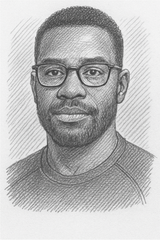Ease Burning Middle Back Pain with These Proven Methods
Discover effective relief strategies for burning middle back pain, from stretching exercises to medical treatments. Get expert tips to manage discomfort and improve mobility today

https://www.youtube.com/watch?v=CKqkBZxC7EU
Did you know that 80% of adults will experience back pain at some point in their lives? Burning middle back pain can really mess up your day, with 55% of people saying it makes them less functional. It's important to find good ways to treat middle back pain to keep living well.
Burning middle back pain comes from many sources, like bad posture, muscle strain, and work setup. Experts say to start treatment early, within 2-3 weeks, to stop it from becoming a long-term problem. A good plan for treating burning upper back can really help you get better faster.
Today's doctors know that one-size-fits-all treatments don't always work. They say we need plans that fit each person's body and pain causes. By focusing on the right areas, we can cut down on pain coming back and keep our spines healthy.
Key Takeaways
- 80% of adults experience back pain during their lifetime
- Early intervention improves treatment success rates
- Personalized treatment approaches are more effective
- Physical therapy can reduce pain by up to 50%
- Addressing root causes is crucial for long-term relief
Understanding Burning Middle Back Pain: Causes and Symptoms
Back pain is common, affecting about 80% of adults at some point. Knowing what causes mid back pain helps manage it better.
To tackle mid back discomfort, first identify the triggers. Dealing with thoracic back pain means understanding its causes well.
Common Triggers of Thoracic Pain
- Muscle Strain: Repetitive motions or poor posture can lead to significant back muscle tension
- Herniated or bulging disks affecting the thoracic spine
- Degenerative disk disease, which impacts an estimated 30% of individuals over 60
- Spinal arthritis, prevalent in those over 55
Recognizing Warning Signs and Symptoms
The symptoms of mid back pain vary. You might feel:
- Sharp or burning sensations in the thoracic region
- Weakness or numbness radiating through the back
- Difficulty maintaining proper posture
- Increased pain during specific movements
Impact on Daily Activities
Chronic back pain can greatly reduce your quality of life. About 54% of people with upper back pain say it affects their daily life. Seeking professional guidance can help manage it.
Understanding these factors is key to managing your back pain and improving your well-being.
Professional Diagnosis and Treatment Options
Figuring out the cause of middle back pain needs a detailed look. Doctors start with a thorough physical check to see how bad the pain is. Almost 80% of Americans will deal with back pain at some point, so finding the right cause is key.
- They review your medical history
- They do a physical exam
- They might use imaging tests
- They check your nerves and muscles
Imaging tests are very important to find what's causing the pain. Doctors might suggest:
| Diagnostic Test | Purpose |
|---|---|
| X-rays | Detect bone-related issues |
| MRI Scans | Evaluate soft tissue damage |
| CT Scans | Provide detailed cross-sectional images |
| Electromyography | Assess nerve and muscle function |
For upper back pain, doctors often suggest physical therapy. Personalized treatment plans are crucial because everyone's situation is different. For central back pain, treatments might include:
- Specific exercises for physical therapy
- Medicines to reduce inflammation
- Medicines to relax muscles
- Changes in your lifestyle
- Cortisone shots
If other treatments don't work, surgery might be an option. Only about 10% of patients need surgery, like spinal fusion. Your doctor will create a plan just for you, based on your symptoms and health history.
Conclusion
Preventing middle back pain starts with taking care of your spine. Up to 30% of people suffer from thoracic region pain. Knowing how to prevent it is key.
Improving your posture, exercising regularly, and using home remedies can help a lot. These steps can lower your risk of pain.
Spotting early signs of pain and changing your lifestyle is important. Studies show 50% of people deal with ongoing middle back pain. This highlights the need for self-care.
Creating an ergonomic workspace, doing strength training, and managing stress are crucial. These actions help keep your spine healthy and prevent problems.
When pain persists, seeing a doctor is vital. Most back pain can be treated at home, but some cases need a professional's help. Regular health checks, a balanced diet, and staying active are important for your spine's health.
By following these steps, you can prevent middle back pain and stay healthy. Your spine's health is vital for your overall well-being. Taking care of it can greatly improve your life.
FAQ
What are the most common causes of burning middle back pain?
Burning middle back pain can come from many sources. Muscle strain and poor posture are common culprits. Herniated discs and spinal injuries also play a role. Nerve compression and muscle tension are other factors.
Underlying conditions like arthritis or degenerative disc disease can also cause pain. Repetitive motions and improper lifting can lead to discomfort. Prolonged sitting is another contributor.
How can I differentiate between normal back pain and a serious condition?
Look out for signs of a serious issue. Pain that lasts more than a few weeks is a red flag. So is pain with fever, unexplained weight loss, or numbness in your limbs.
Weakness in your legs or pain that gets worse when lying down is also concerning. If you notice these symptoms, see a doctor right away.
What are the most effective exercises for relieving middle back pain?
Gentle stretching and cat-cow yoga poses are great for easing pain. Shoulder blade squeezes and thoracic spine rotations help too. Core strengthening exercises are also beneficial.
Low-impact activities like swimming and walking can improve flexibility. Always talk to a physical therapist or doctor before starting new exercises.
Can stress and emotional factors contribute to middle back pain?
Yes, stress and emotional tension can affect your back. Psychological stress can tighten muscles in your upper and middle back. This can lead to muscle tightness, reduced blood flow, and inflammation.
Chronic stress can worsen existing back pain and create a cycle of discomfort.
What treatment options are available for burning middle back pain?
There are many ways to treat middle back pain. Physical therapy and pain management medications are common. Chiropractic care, massage therapy, and acupuncture can also help.
Hot and cold therapy, stretching exercises, and sometimes surgery are options too. A treatment plan is tailored to your specific needs. Always consult a healthcare professional for the best approach.
How can I prevent middle back pain in my daily life?
To avoid middle back pain, maintain good posture and use ergonomic furniture. Regular exercise and a healthy weight are key. Use proper lifting techniques and take breaks during long sitting periods.
Stay hydrated, manage stress, and wear supportive shoes. Stretching and strengthening exercises can also keep your spine healthy.
When should I seek professional medical help for my middle back pain?
Get medical help right away if you have severe pain or pain after a big injury. Pain with neurological symptoms like numbness or weakness is a warning sign. So is unexplained weight loss, fever, or loss of bladder or bowel control.
If pain persists for more than a few weeks, seek medical attention. A doctor can diagnose and treat your condition effectively.
👉 Join the Active Man Community
Get expert tips, workout guides, nutrition hacks, and the latest trends delivered straight to your inbox every week. No spam — just actionable insights to help you live stronger, healthier, and better.





